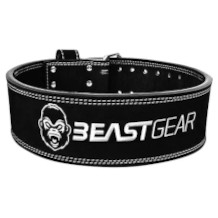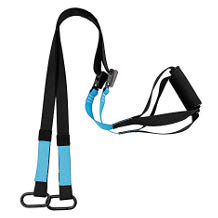Punching bag purchasing advice: how to choose the right product
- What You Need to Know
- Punch bags are used in various martial arts.
- They can also be used as part of endurance training.
- The size and weight of your punching bag should be based on your own height and body weight.
- Always wear hand wraps and boxing gloves when exercising.
The Punching Bag: An Old Sparring Partner
A gloomy hall. Cattle carcasses hang in long rows on thick metal hooks. Two men stroll through the cold hall: a boxer and his future brother-in-law. After a heated conversation, the former gets angry and breaks down. He hits a carcass– again and again until his fists are red. This is a scene from the movie Rocky. The eponymous hero of the film is an aging boxer from Philadelphia. He doesn’t have a punching bag at home. He’s too poor for that. That’s why he trains at his workplace– a slaughterhouse.

Punching bags have been around for a long time. After all, they are just large, cylindrical objects which feel good to punch or kick. And they’re not only used by boxers. The punching bag has now become a widely used training accessory.
The Punching Bag: Not Just for Boxers
In addition to martial artists, punching bags are also used by recreational athletes for endurance training or to manage stress and anger. There are several different punching bags available on the market which can be used in a number of different ways.
Martial Arts
Most martial arts involve either punching or grappling. When the focus is on grappling (that is, grasping and throwing), punching bags are rarely used. This applies to Greco-Roman wrestling, judo, and Brazilian jiu-jitsu, for example. Popular sports in which punching bags are regularly used for training include boxing, kickboxing, muay thai, taekwondo, karate and MMA.
In martial arts, there can be many reasons for training with a punching bag. Punchbags are great for technique training as they are an inanimate target for trying out new moves. Punching power is another skill which can be trained with a punchbag. Punchbags can withstand a lot of wear and tear, allowing athletes to practice striking as hard as they wish. Using a punchbag can also help a martial artist to practice the correct fighting form. It is worth noting that even professionals use punching bags as part of their training.
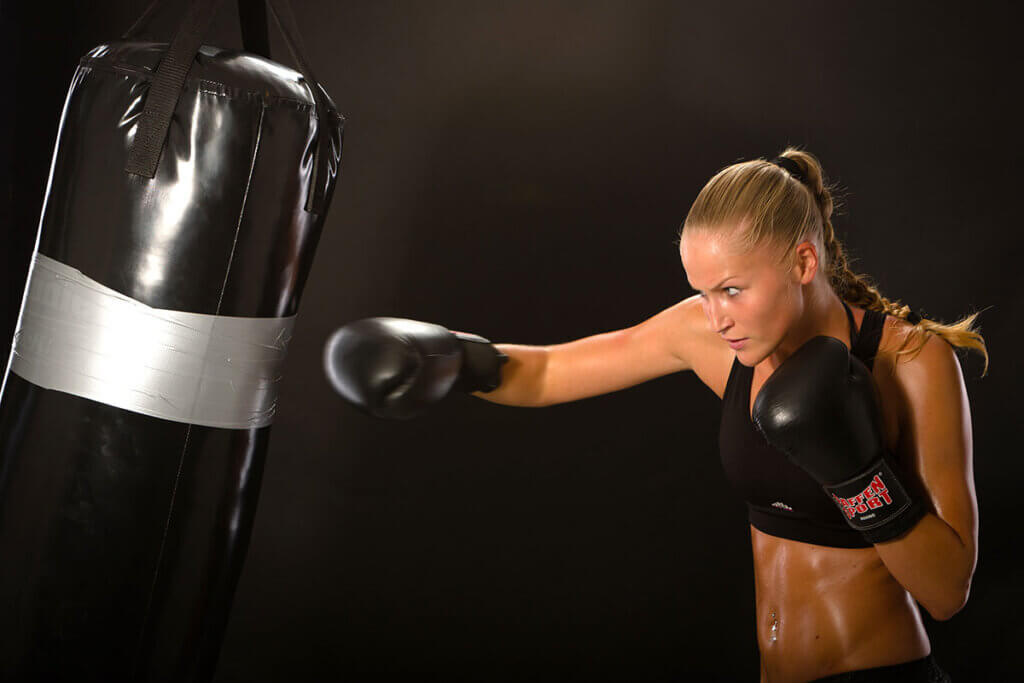
Fitness
Even people who are not interested in martial arts are increasingly turning to punching bags as an effective method of endurance training. Anyone who has ever trained on a punching bag knows how quickly they can tire you out. Adding footwork to your bag training will make you run out of steam even quicker.
People often like to integrate their punching bag into HIIT training. HIIT stands for “High Intensity Interval Training”. It is a training protocol in which exercises are performed repeatedly for short periods of time at high intensity. This training method is primarily used for endurance and burns a lot of calories. HIIT with a punching bag is usually organised into rounds to simulate a real boxing match. The person training strikes the bag at high intensity for a few minutes and then rests briefly. This process is repeated as many times as possible or determined beforehand. Depending on the fitness level of the individual, the working and rest times can be adjusted.

Reducing Stress and Anger
Punching bag training is also known to have psychological benefits, allowing you to let your aggressions run free. Almost everyone is guilty of occasionally feeling anger. It is a part of life. However, it is important to deal with these feelings in a way that doesn’t harm others. A punching bag can be of great help here. Hitting the bag requires a large release of energy. Some people even say that bag work can help you learn how to control violent impulses. You can even do this with bad form. This kind of exercise is just about getting rid of your emotions. Who knows, you might even enjoy yourself! This would be logical given that punching bag training is a form of sport, and sport is known to release “happiness” hormones in the body, such as dopamine and serotonin.
What to Look Out for When Buying a Punching Bag
There are a few criteria to consider before buying a punching bag. Some, like weight or height, relate directly to needs and preferences of the individual. Other purchase criteria concern installation options and the cost. With that in mind, it makes sense to read up about the right punching bag in advance.
Hanging and Standing Punching Bags
Punchbags come in different sizes and shapes. However, only standing and hanging punching bags are considered in this comparison. Although both types are suitable for boxing training, they behave a little differently in terms of space. Standing punching bags need to be assembled. They are attached to a stand that is filled with water or sand. Sand is recommended for use by adults because it is heavier, meaning that the bag won’t tip over as easily. Once hit, standing punching bags rock back and forth.
Advantages
- Space saving
- Can be stowed away quickly
- No construction effort
Disadvantages
- Danger of tipping over
- Can potentially scratch the floor
Hanging punching bags are the more traditional choice and are often preferred by professionals. Setting them up, however, is a little more complex. In order to set them up, you need to have a ceiling or beam capable of carrying their weight. When hit, the bag swings back and forth. This gives boxers a chance to duck and sway while simulating the movement of a real match. Since they cannot tip over, hanging punching bags are also well-suited for training punching power.
Advantages
- Cheaper
- No risk of tipping over
- Better for practicing combination punches
- Suitable for training punching power
Disadvantages
- More space required
- Difficult assembly
The Best Material
The outer skin of a punching bag can be made from a variety of animal hides or artificial materials. Most importantly, the material should be robust and flexible. Punching bags are subjected to repeated blows and kicks, meaning that the material should be durable. The quality of a punching bag can usually be recognised by the quality of its seams. Punching bags with strong seams will likely prove more durable.
Leather
Leather offers that classic punchbag aesthetic. In addition, the material is flexible, robust, and durable. Leather bags are usually high quality, which can be seen in the stitching of the seams. They are also, predictably, the most expensive option. Since leather absorbs moisture, it is important to ensure that the bag isn’t kept in an environment that is too damp.
Leatherette
Synthetic leather is similarly flexible and robust, and thus offers an inexpensive alternative to real leather. The disadvantage of synthetic leather is that it is not as durable.
Canvas
Canvas is usually the cheapest of all the materials used for punching bags. Comparatively, canvas is extremely hard and therefore not always the best choice.
Plastics
Plastics such as vinyl, nylon, or polyester are also suitable as materials for punching bags. They are cheap and flexible. They are also not as sensitive to moisture exposure as other materials. On the other hand, they are not as durable and robust as leather. Plastic punching bags are most likely intended for light cardio use.
Filling
The filling material has a large effect on the hardness and weight of a punching bag. Punching bags are usually bought already filled, but it is also possible to purchase empty punching bags and fill them yourself. Depending on your material of choice, this could be difficult and tedious.
Wood Chips or Sawdust

Most fillings for a punching bag are easy to find. Wood chips or sawdust are two cheap examples. They are a good choice if you plan to fill your punching bag yourself, although they can become rather tough over time. Wood chips and sawdust also absorb moisture, so it is not advisable to expose them to high humidity for too long.
Textile and Scraps of Fabric

These days, textile or fabric scraps are the most popular filling material. Fabric scraps can be easily distributed and packed throughout the bag. They are also cheap. They can, however, become harder and heavier over time. It is difficult to estimate how small the scraps should be cut and how tightly the fabric should be pressed in. This means that they are not well suited for filling yourself at home. It is important that the punching bag does not become too hard.
Animal Litter
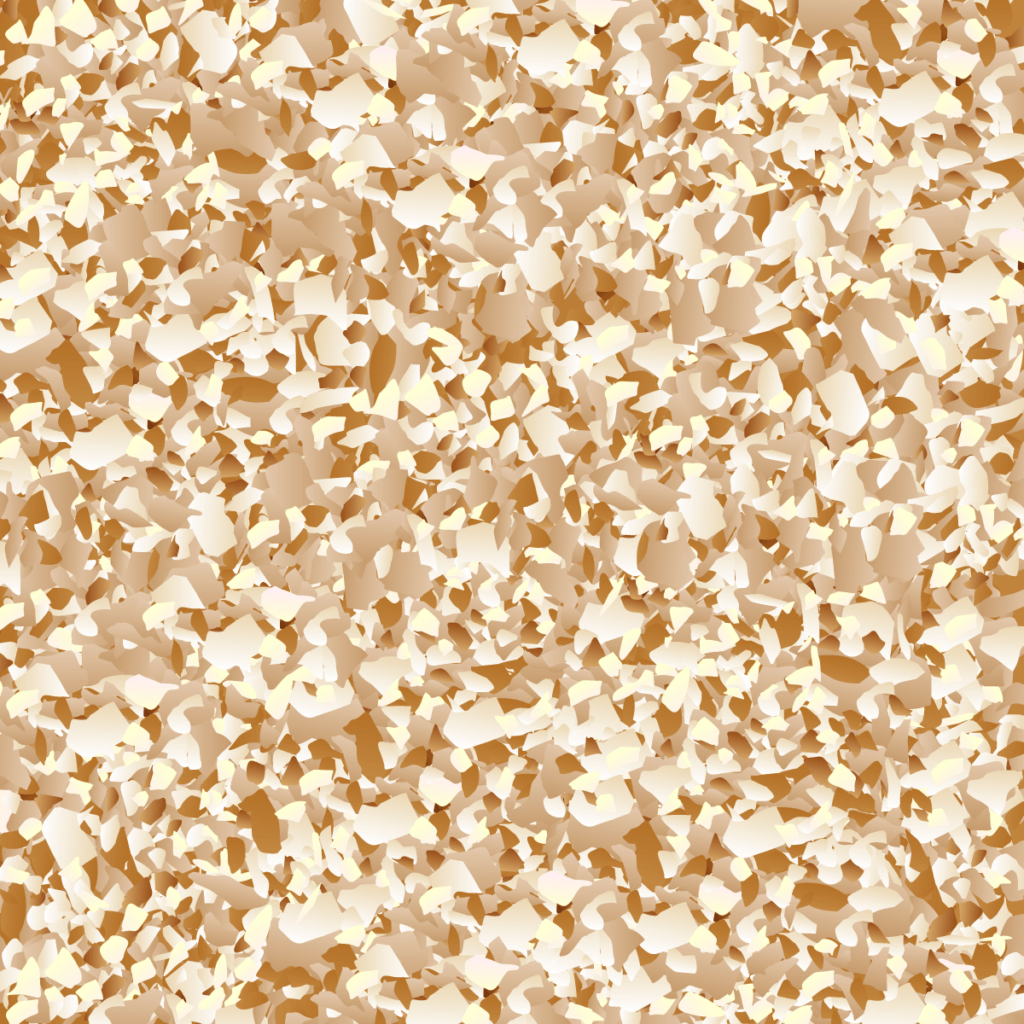
Animal litter can also be used. It is cheap, easy to buy, and shouldn’t pose any major problems while you’re filling the bag. Litter can, however, slowly decompose over time, eventually creating dust. If the punching bag is not completely airtight, this dust can begin to escape from the seams. Escaped dust would then need to be cleaned after use and could even be inhaled while exercising.
Paper Filling

Small pieces of paper are another potential filling. This is a very cheap option which can be made at home. Using recycled paper makes this one of the most environmentally friendly options available. Again though, with time, the pieces of paper are liable to becoming too hard. Paper can also absorb moisture. If the humidity in the air is high, it is not advisable to fill your punching bag with paper.
Rice, Grains, Corn, and Pulses

Dried food can also be used for the filling. Rice, grains, corn, and pulses are just some of the foods that can be used. Although dried foods are easy to get hold of, they are also quite expensive when compared to other materials. Moreover, they are too hard for most people to use comfortably. Dried food can also get moldy over time, especially when exposed to moisture.
Sand

Last but not least, sand has traditionally been used as a filler—so much so, in fact, that punching bags are sometimes also affectionately called “sandbags”. In recent years, however, sand has lost some of its popularity. This owes to the fact that sand is extremely heavy and hard. When it absorbs moisture, it becomes even harder and heavier. So much so, that it can pose an injury risk to the wrist and hand.
Size
The correct size of a punching bag mainly depends on the height of the person using it and the type of training they wish to perform. It is generally advised that punching bags should not be less than 90 cm tall. Those looking to train their punching ability are best off with a hanging punching bag of 100 cm or more in length. The height is easily adjustable thanks to the chain on which it is attached. If you opt for a free-standing model, you should use a punching bag that is roughly your own size. This gives you the option to train punches to the head, as well as shots to the body.
For people looking to train “low kicks”, the hanging punching bag should correspond to their own body size. In martial arts, like Thai boxing, kicks are often aimed at the height of the calf or knee. The punching bag should ideally be big enough that both low kicks and blows to the head can be practiced at the same time.
Not to be overlooked, the width and diameter of a punching bag are also worthy of consideration. A wider punching bag offers a larger area for punching. Thus, a wider variety of techniques can be practiced on a wide punching bag, such as the hook (a punch in which the arm is whipped round from the side). A diameter of at least 30 cm is recommended.
Weight
The lighter the punching bag, the stronger it will buckle or sway after a strong strike. Although it can be fun to swing a punching bag around with force, some resistance is necessary—especially if you are trying to train punching power. As a rule of thumb, it is recommended to use a punching bag that weighs around 40% to 50% of your own body weight. This should ensure that the bag is resistant enough to hold firm, even after a heavy strike. Of course, the weight depends heavily on the size and filling material.
Standing Punching Bags are Heavier
The weight of a standing punching bag may seem frightening at first glance. It should be noted however that most of the weight is in the stand. The sand needs to be heavy to prevent the punching bag from tipping over. When buying, it is best to orient yourself based on the weight of the punching bag and not the total weight with the stand included.
Prices and Manufacturers
The price of a punching bag is heavily dependent on its constituent parts and the manufacturer. A small hanging punching bag with a plastic skin from a no-name brand can be very cheap, starting at around £25. By contrast, the price of a large standing punching bag made of leather from a premium brand like Everlast can cost several hundred pounds. There is no upper limit for pricing. Some of the most famous manufacturers include Hammer, Adidas, Everlast and Bad Company.
You can buy punching bags both online and in specialist shops, although they are usually cheaper online. Note that shipping costs are not usually included. Nevertheless, it is worth visiting a specialist retailer. There, you can take a real look at the equipment and maybe even try it out yourself. For beginners, this can provide a feeling for which punching bag is more suitable.
Usage Tips
At first sight, using a punching bag seems rather self-explanatory— just hit it! Unfortunately, it is not always that simple. In order to get your money’s worth from punchbag training, there are a few things you should consider.
The punching bag should be positioned with sufficient space around it. That space should not only accommodate the bag, but also be large enough for you to move around in during training and perform techniques which require a lot of space, for example, a wheel kick. If the punching bag comes into contact with the wall, it is also liable to leaving behind stains.
Footwork is an important part of boxing training. Not only do you need to move around the bag in order to simulate actual competition, but the strength of your punches should come from the hips and legs.
Under no circumstances should you use a punching bag without hand wraps and boxing gloves. They are designed to protect your hands and wrists. Sometimes they come included with the punchbag itself. It is recommended, however, that you buy them separately, as they should be tailored to your hands.
About Boxing Gloves:
Many think that boxing gloves are primarily designed to protect the opponent’s head. This is not entirely the case. Boxing gloves mainly protect the hands and wrists of the user. Meanwhile, the padded surface reduces cuts and tears to the opponent’s face. That said, wearing a glove enables the boxer to hit harder by providing the support that prevents the hand or wrist from breaking during a fight. It is for this reason that they are also worn during bag training, even though the bags themselves do not need protection.
As a rule, punching bags are very easy to maintain. Any sweat or dust residue can be wiped clean with a damp cloth. However, most bags are not waterproof. It is therefore advisable to not let them get too wet. For more detailed instructions, follow the manufacturer’s guidelines.

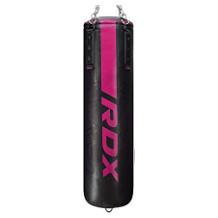
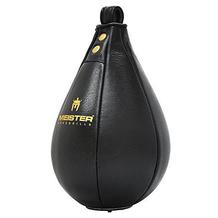
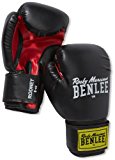
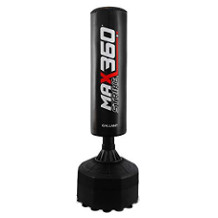

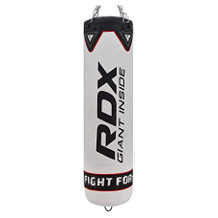
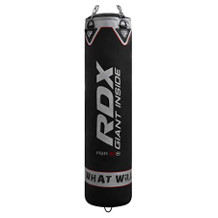
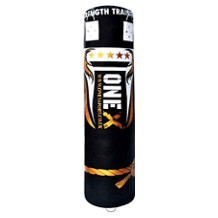
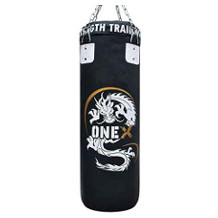
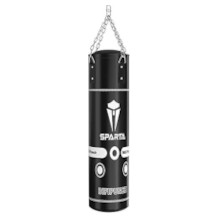
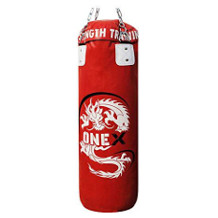

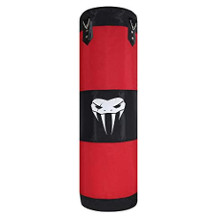
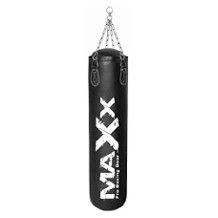

 1,121 reviews
1,121 reviews

